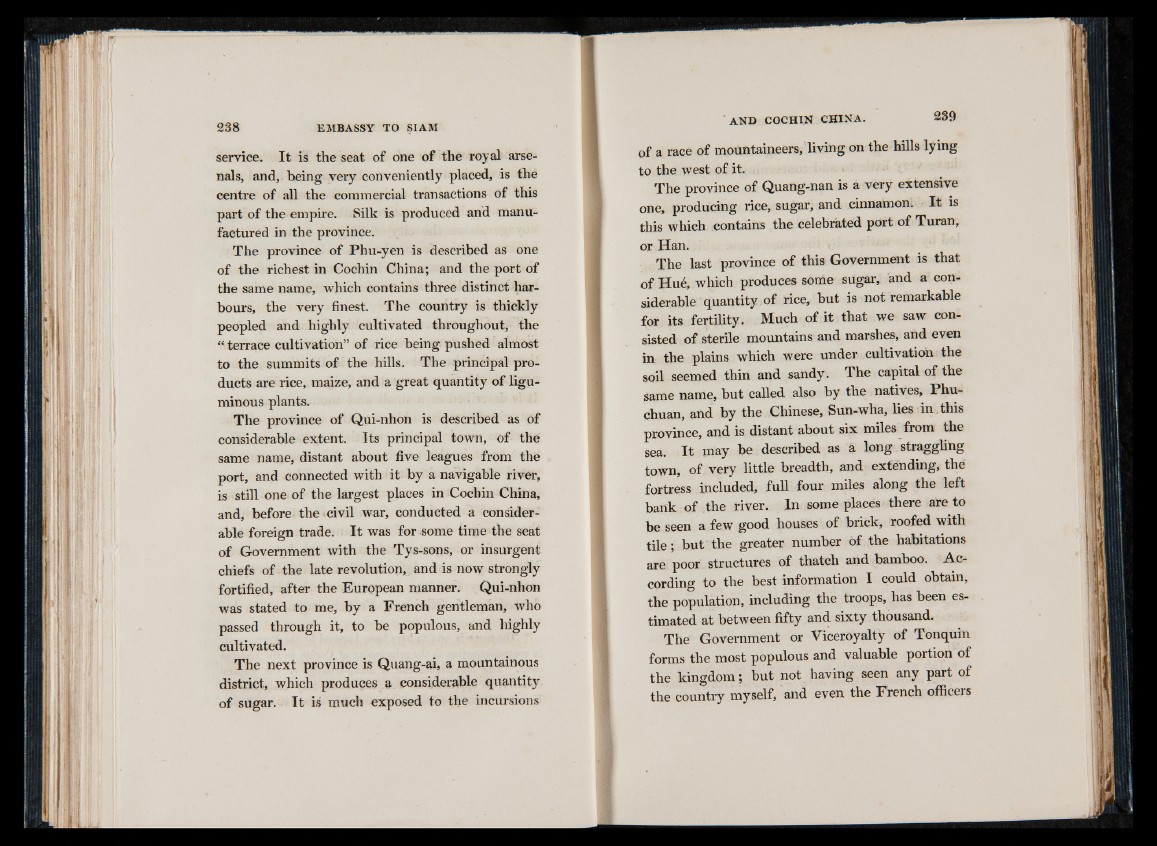
service. I t is the seat of one of the royal arsenals,
and, being very conveniently placed, is the
centre of all the commercial transactions of this
part of the empire. Silk is produced and manufactured
in the province.
The province of Phu-yen is described as one
of the richest in Cochin China; and the port of
the same name, which contains three distinct harbours,
the very finest. The country is thickly
peopled and highly cultivated throughout, the
“ terrace cultivation” of rice being pushed almost
to the summits of the hills. The principal products
are rice, maize, and a great quantity of ligu-
minous plants.
The province of Qui-nhon is described as of
considerable extent. Its principal town, of the
same name, distant about five leagues from the
port, and connected with it by a navigable river,
is still one of the largest places in Cochin China,
and, before the civil war, conducted a considerable
foreign trade. I t was for some time the seat
of Government with the Tys-sons, or insurgent
chiefs of the late revolution, and is now strongly
fortified, after the European manner. Qui-nhon
was stated to me, by a French gentleman, who
passed through it, to be populous, and highly
cultivated.
The next province is Quang-ai, a mountainous
district, which produces a considerable quantity
of sugar. I t is much exposed to the incursions
of a race of mountaineers, living on the hills lying
to the west of it.
The province of Quang-nan is a very extensive
one, producing rice, sugar, and cinnamon. I t is
this which contains the celebrated port of Turan,
or Han.
The last province of this Government is that
of Hué, which produces some sugar, and a considerable
quantity of rice, but is not remarkable
for its fertility. Much of it that we saw consisted
of sterile mountains and marshes, and even
in the plains which were under cultivation the
soil seemed thin and sandy. The capital of the
same name, but called also by the natives, Phu-
chuan, and by the Chinese, Sun-wha, lies in.this
province, and is distant about six miles from the
sea. I t may be described as a long straggling
town, of very little breadth, and extending, the
fortress included, full four miles along the left
bank of the river. In some places there are to
be seen a few good houses of brick, roofed with
tile ; but the greater number of the habitations
are poor structures of thatch and bamboo. •.■A.c*
cording to the best information I could obtain,
the population, including the troops, has been estimated
at between fifty and sixty thousand.
The Government or Viceroyalty of Tonquin
forms the most populous and valuable portion of
the kingdom; but not having seen any part of
the country myself, and even the French officers